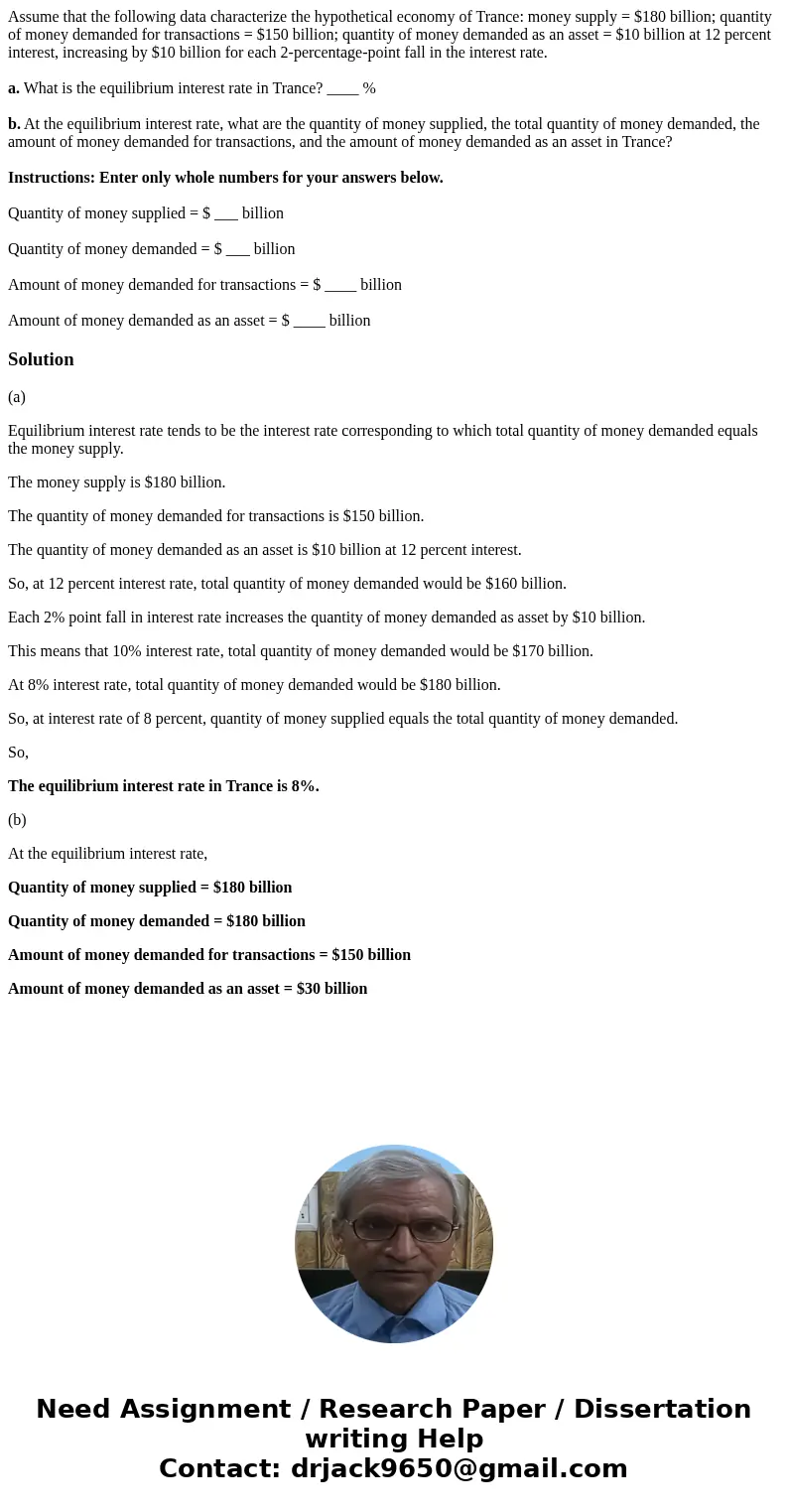Assume that the following data characterize the hypothetical
Assume that the following data characterize the hypothetical economy of Trance: money supply = $180 billion; quantity of money demanded for transactions = $150 billion; quantity of money demanded as an asset = $10 billion at 12 percent interest, increasing by $10 billion for each 2-percentage-point fall in the interest rate.
a. What is the equilibrium interest rate in Trance? ____ %
b. At the equilibrium interest rate, what are the quantity of money supplied, the total quantity of money demanded, the amount of money demanded for transactions, and the amount of money demanded as an asset in Trance?
Instructions: Enter only whole numbers for your answers below.
Quantity of money supplied = $ ___ billion
Quantity of money demanded = $ ___ billion
Amount of money demanded for transactions = $ ____ billion
Amount of money demanded as an asset = $ ____ billion
Solution
(a)
Equilibrium interest rate tends to be the interest rate corresponding to which total quantity of money demanded equals the money supply.
The money supply is $180 billion.
The quantity of money demanded for transactions is $150 billion.
The quantity of money demanded as an asset is $10 billion at 12 percent interest.
So, at 12 percent interest rate, total quantity of money demanded would be $160 billion.
Each 2% point fall in interest rate increases the quantity of money demanded as asset by $10 billion.
This means that 10% interest rate, total quantity of money demanded would be $170 billion.
At 8% interest rate, total quantity of money demanded would be $180 billion.
So, at interest rate of 8 percent, quantity of money supplied equals the total quantity of money demanded.
So,
The equilibrium interest rate in Trance is 8%.
(b)
At the equilibrium interest rate,
Quantity of money supplied = $180 billion
Quantity of money demanded = $180 billion
Amount of money demanded for transactions = $150 billion
Amount of money demanded as an asset = $30 billion

 Homework Sourse
Homework Sourse